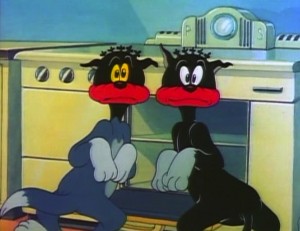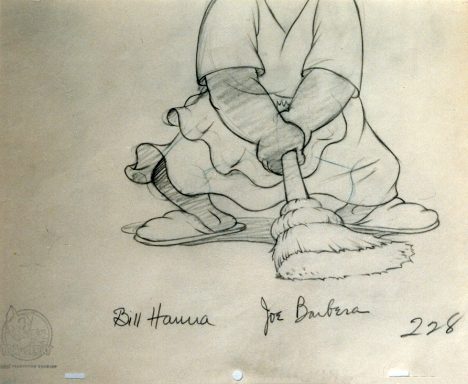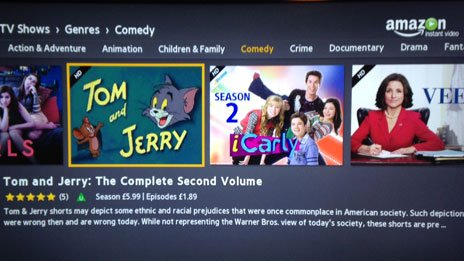Amazon Prime and iTunes have included a warning with their packaging of Tom and Jerry – Metro-Goldwyn-Mayer’s series of theatrical cartoons starring Tom Cat and Jerry Mouse. From 1940 to 1952, an African American female domestic servant appeared in episodes, and in that period the characters often appeared in blackface. These images undoubtedly are the reason why the warning says that the cartoons may contain “ethnic and racial prejudices that were once commonplace in American society.”
The warning has its detractors. Some of them find the disclaimer unnecessary because to them Tom and Jerry is not racist, and others dismiss the warning as another example of contemporary excessive political correctness. The problem is that detractors are using personal feelings to try to stop a potentially useful discussion about ethnic depictions in American entertainment. Their knee-jerk “It’s not racist” and “liberal political correctness” reactions are only opinions that disregard the facts concerning the cartoons.
In my book The Colored Cartoon: Black Presentation in American Animated Short Films, 1907-1954, I chronicled the servant character’s development from her debut to her final episode. I noted that in her twelve years in the series, MGM never changed her dialect. The writers of the scripts gave her the same mis-conjugated verbs and spelled her mispronounced words exactly the same throughout that period, refusing to develop her at all. Also, none of the scripts give the character a name. She is the “maid” or “colored maid,” and the denial of an identity is part of her lack of development over a decade’s time.
I also looked at the blackface scenes in MGM’s cartoons, most of which have a character darkened after an explosion. Again, the scripts are stereotypically charged, using phrases like “looking like a pickaninny” and walking “a la Stepin Fetchit.” Thus, the MGM artists made these cartoons with ethnic jokes at African Americans’ expense very much in mind. Even one of the series’ animators I interviewed called the maid an “outright racist cartoon character.”

As for the cries of modern political correctness, it’s not that modern. In my book I note that civil rights groups protested the showing of Tom and Jerry episodes in theaters as early as 1949. They claimed that the exhibitions of the maid character harmed the minds of children, and they occasionally convinced theater-owners to withdraw the cartoons.
Such protests became so impactful to Hollywood that MGM eventually became proactive about the maid. The studio reanimated the 1948 episode The Little Orphan in wide-screen format as Feedin’ the Kiddie in 1957. The original episode featured the maid, but the remake omitted her entirely. Then in 1965, MGM prepared the series for Saturday morning network television by reanimating all of the maid’s appearances. The studio replaced her with a European American maid character in all of her scenes. In recent years, the original scenes returned for cable television broadcast on Cartoon Network and Boomerang, bur MGM overdubbed Lillian Randolph’s stereotyped vocal performance with Thea Vidale’s dialect-free delivery.
The 2014 warning is just the latest attempt to make Tom and Jerry commercially viable in a changing ethnic American landscape. The disclaimer is a new approach in that it does not censor or gloss over but instead informs. It allows an opportunity for education about the films, while the detractors get to enjoy the uncensored original episodes.
Does the warning do enough to address the ethnic content of the series? Are other solutions besides disclaimers possible?


